
Lots of discussion recently over on the Facebook side regarding the recent publication in Ecological Letters by Karin Burghardt and Douglas Tallamy, “Not all non-natives are equally unequal: reductions in herbivore β-diversity depend on phylogenetic similarity to native plant community.” http://onlinelibrary.wiley.com/doi/10.1111/ele.12492/full
While there are certainly some things to nitpick in the paper (see Linda’s comments on the Facebook discussion), I think this paper may go a long ways re-shape, and possibly even begin to end, the debate over native versus exotic.
How was the study conducted. In 2006 Tallamy’s group established a series of test landscape plantings. Each planting fell into one of four groups: non-native congeners (species that are not native but have native relatives in the same genus); non-native non-congeners (plants from non-native genera), native congeners and native non-congeners. In 2008, when the trees were about 6’ (1.8 m) tall, they conducted a census to identify and quantify the adult and immature insect herbivores they collected. They analyzed the data to determine the amount of insect herbivore diversity within each planting type. Specifically they looked at what ecologists refer to as beta-diversity, the amount of species diversity among sites. If you’re interested and want to learn more check out https://methodsblog.wordpress.com/2015/05/27/beta_diversity/
So, what did they find? Like every good study on host-insect interactions; the answer is, “It depends.” (BTW, if you’re following along at home the key figure in the paper is Fig. 3). When Burghardt and Tallamy looked at the differences in diversity between adult herbivores on native and non-native congeners, they found no difference. When they looked at differences in diversity between immature herbivores on native and non-native congeners, they found no difference. When they looked at differences in diversity between adult herbivores on native and non-native non-congeners, they found no difference. When they looked at immature herbivores on native and non-native non-congeners, they found a small but statistically significant difference, with higher total diversity for native non-congener.
As an aside, it is also instructive to look the version of Figure 3 presented in the article’s supplemental materials, which has been re-scaled to include zero. Including zero on the scale helps to give a better perspective on the actual variation among means. It’s a little like the “Truth in lending statement” that comes at the end of your credit card bill.

So, a possible alternative title for the paper could be, “Do native or non-native plants increase herbivore diversity? Most of the time it doesn’t matter.” That said, I think this paper makes a number of contributions and will start to shift native versus non-native debate, and perhaps even signal the beginning of the end. First of all it demonstrates that that non-native species of native genera contribute equally to herbivore diversity. However, I think some of the most insightful information in the paper is buried between the lines and in the supplemental information attached to the online version of the paper. The authors briefly mention that they also looked at guilds (i.e., chewing insects, sap feeding insect, xylem feeders, etc.). Once again the answer of whether natives contribute more to species diversity is, “It depends.” For xylem feeders, for example, diversity was the same for congeners and non-congeners.
To me, this is the level of resolution we need to work to gain a true handle on the situation. I’m not an entomologist and I’ve never played one on TV but I’ve been around these questions long enough to know that different types of insects are attracted to or repelled by different plants by different mechanisms. In one case it’s an attraction pheromone, in another it’s a defense chemical, sometimes it’s leaf toughness or a tree is able to produce enough resin to drown boring insects. An old axiom states that ecosystems are not more complicate than we think; ecosystems are more complicated than we can think. As this paper demonstrates, to think that all the complex interactions between plants and insects can be boiled down to something as simple as native or exotic is hopelessly naïve.

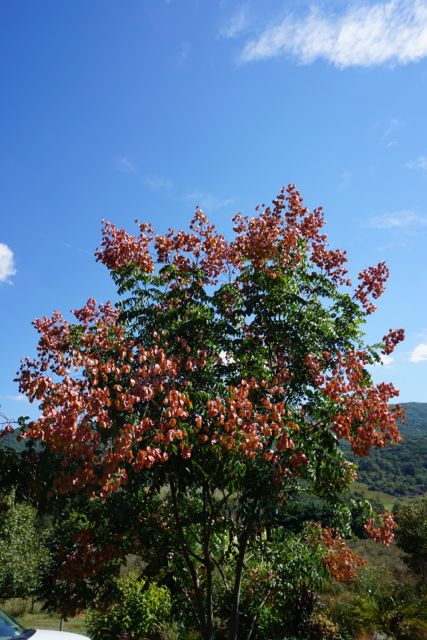 I cut one of the capsule-filled branches off; and a month later everything is still pink and intact in a vase of water. I also noted each of three capsule sections bears one dark round glossy seed. Uh-oh. That’s a lot of seeds.
I cut one of the capsule-filled branches off; and a month later everything is still pink and intact in a vase of water. I also noted each of three capsule sections bears one dark round glossy seed. Uh-oh. That’s a lot of seeds.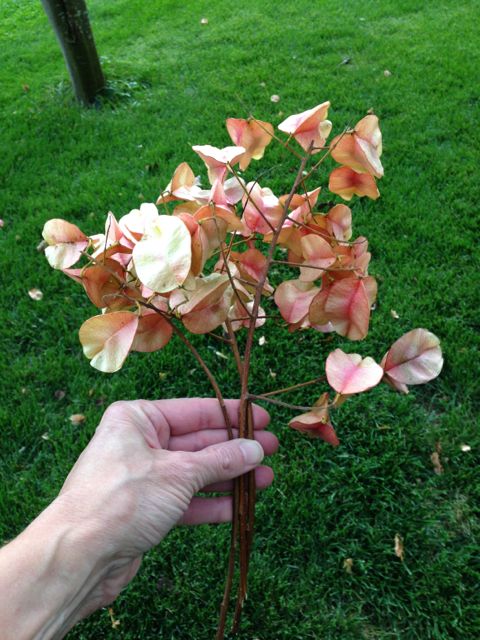 With our first freeze, the leaves fell – in big chunks consisting of a tough foot-long petiole and a bunch of leaflets. My mower didn’t do a good job chopping them up – ended up having to rake and move to compost pile. What the mower DID do was fling the papery capsules far into other beds.
With our first freeze, the leaves fell – in big chunks consisting of a tough foot-long petiole and a bunch of leaflets. My mower didn’t do a good job chopping them up – ended up having to rake and move to compost pile. What the mower DID do was fling the papery capsules far into other beds.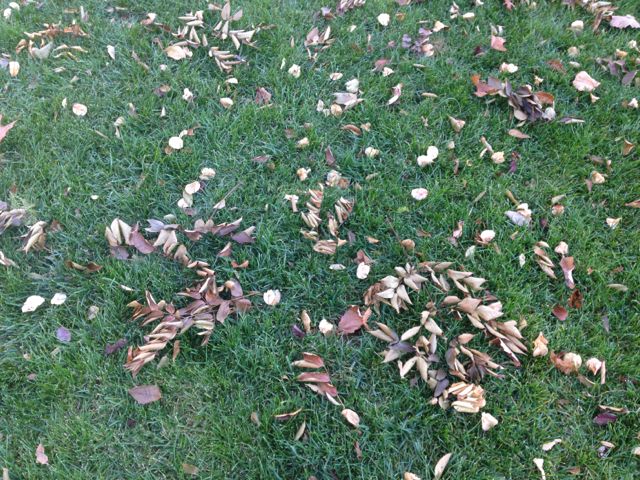 Flashy? Yes.
Flashy? Yes.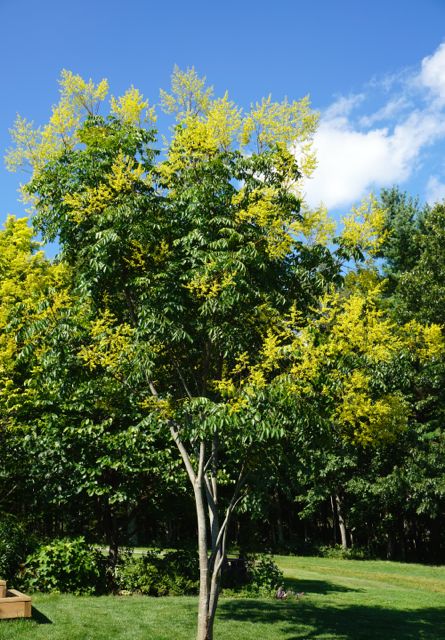



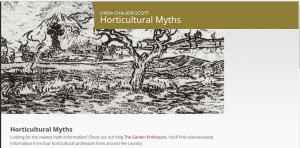


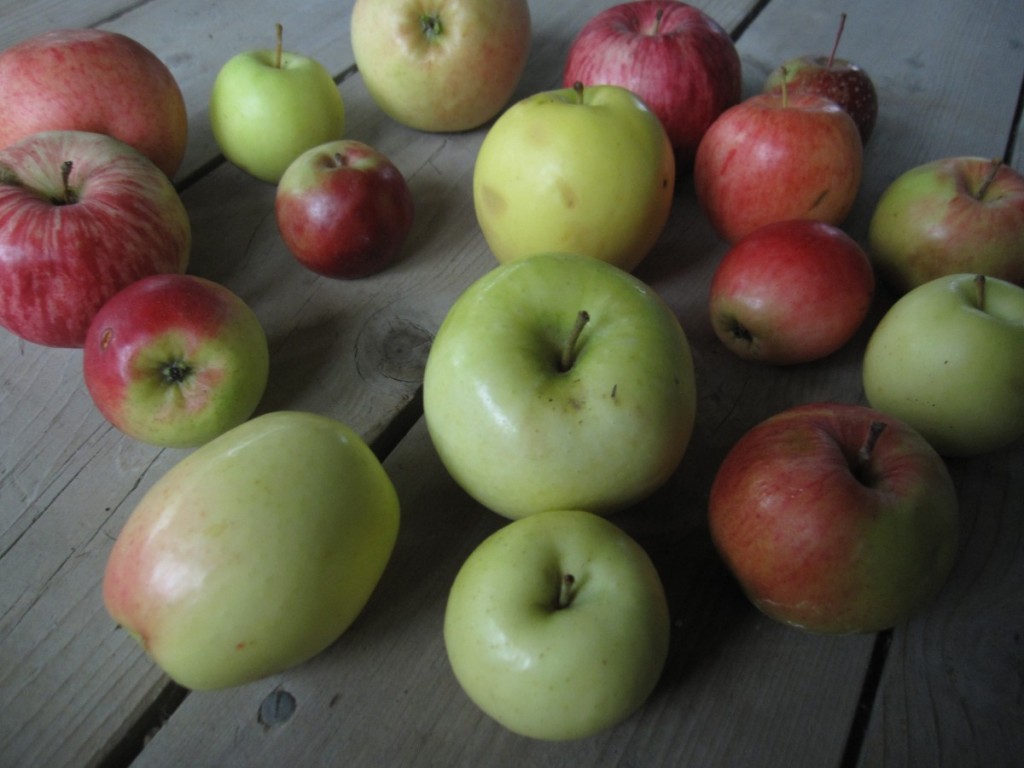
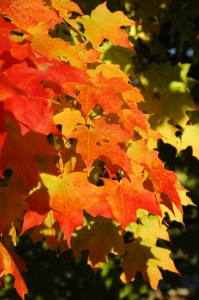
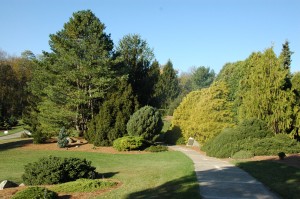

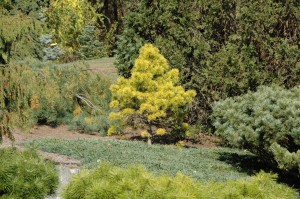
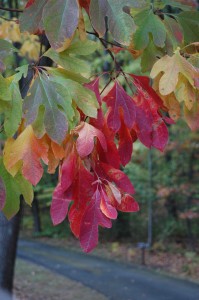
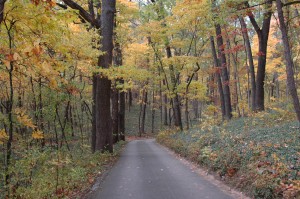
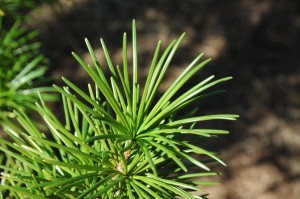
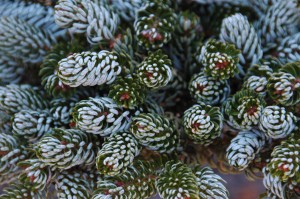


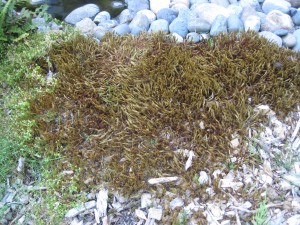

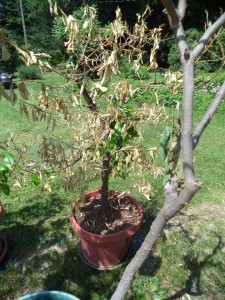
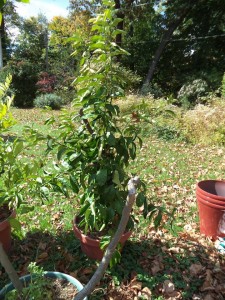

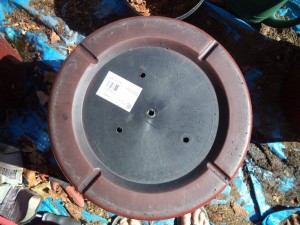
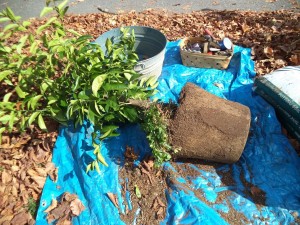
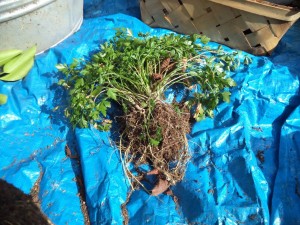
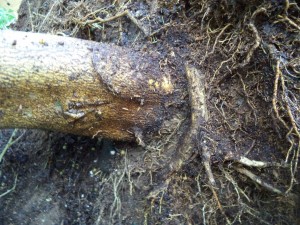
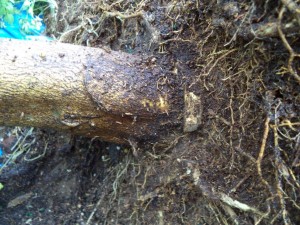
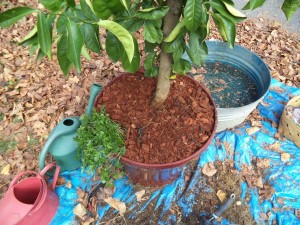
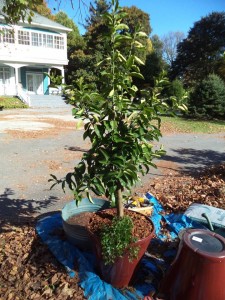

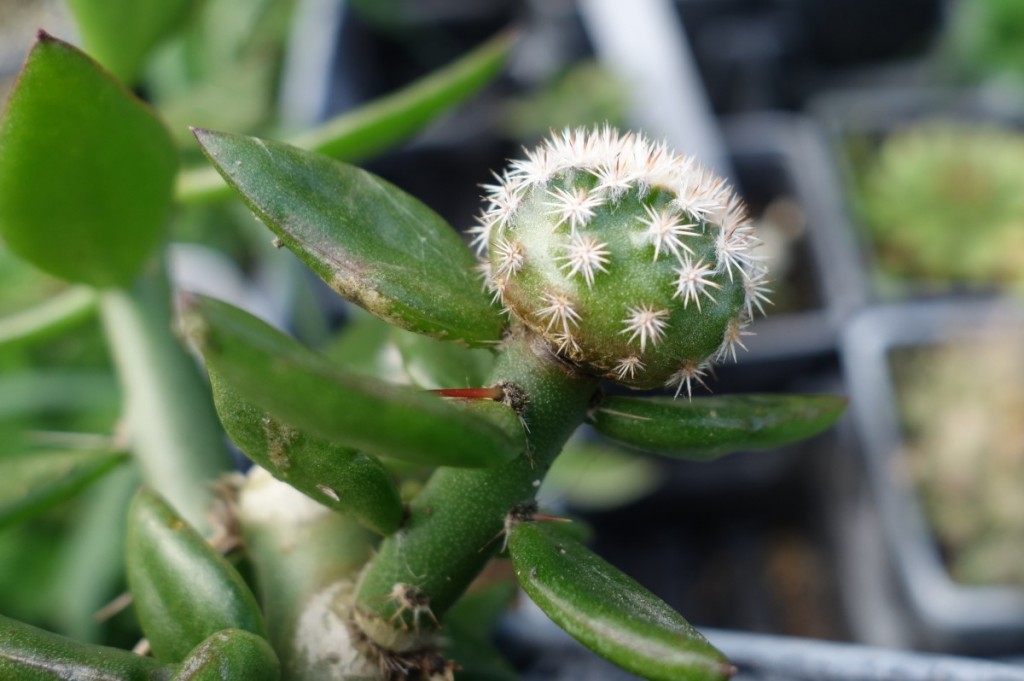
 This is a (terrible, blurry) picture what the graft looked like when I first made it back in July. Just three months later it has grown to enormously, while the seedlings I left on their own roots look pretty much the same. I’ll let it grow on the graft for a while, then probably next year some time, cut it off, and move it into the garden, getting me to a reasonably sized plant in a reasonable amount of time.
This is a (terrible, blurry) picture what the graft looked like when I first made it back in July. Just three months later it has grown to enormously, while the seedlings I left on their own roots look pretty much the same. I’ll let it grow on the graft for a while, then probably next year some time, cut it off, and move it into the garden, getting me to a reasonably sized plant in a reasonable amount of time.